K40 Laser Cutter
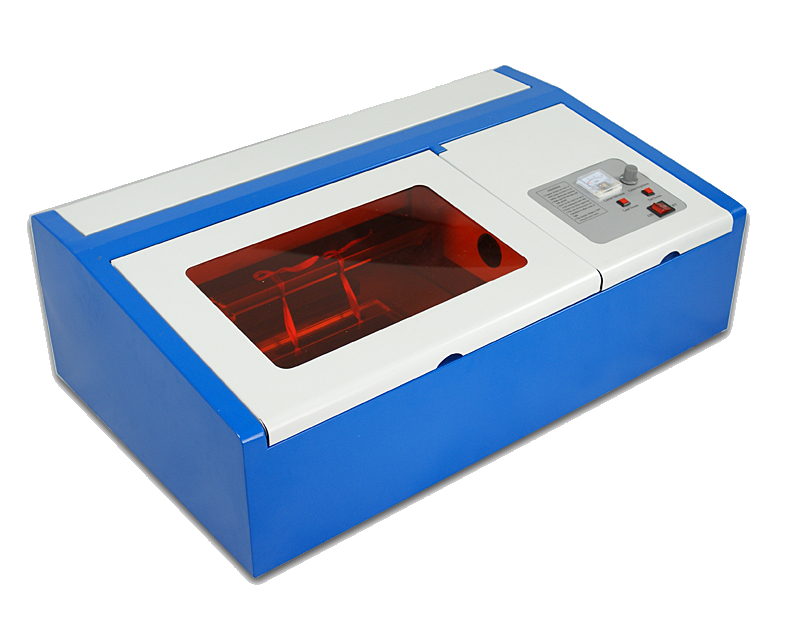
K40 Laser Cutter
- Model: K40 (general term for this style and power of C02 laser etching and cutting machine)
- Specs:
- 40 watt CO2 laser
- Upgraded with new tube, electronics, and software in 2019
- Uses Lightburn laser software on a HP Elitebook laptop
- Air assist to force smoke away from the workpiece
Training
Instructions
 Turn on Breaker 23 in the electrical panel located in the electronics room to activate the ventilation system.
Turn on Breaker 23 in the electrical panel located in the electronics room to activate the ventilation system.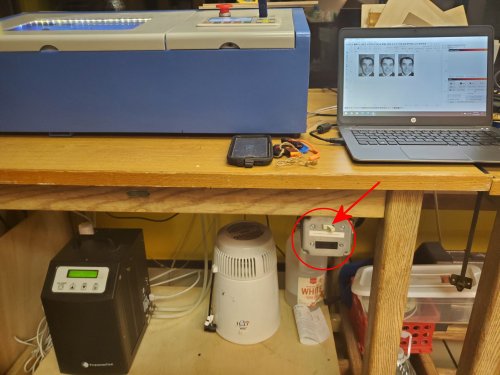 Turn on main control switch located under the table.
Turn on main control switch located under the table.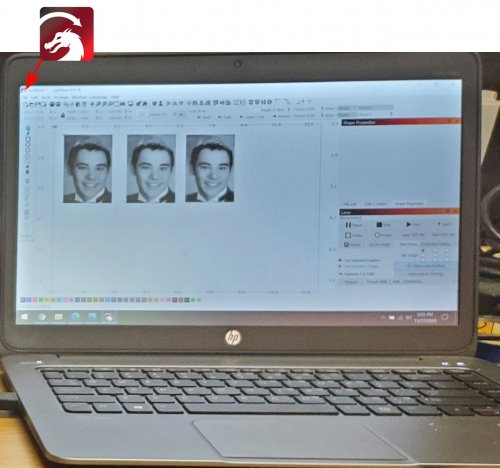 Turn on the HP laptop next to the cutter, make sure the USB cable from the cutter is inserted into the laptop, and then start the Lightburn software.
Turn on the HP laptop next to the cutter, make sure the USB cable from the cutter is inserted into the laptop, and then start the Lightburn software. Create or open your project. Lightburn can do some simple shapes, lines, text and the like. Go to the Lightburn website to find tutorials on using the software.
Create or open your project. Lightburn can do some simple shapes, lines, text and the like. Go to the Lightburn website to find tutorials on using the software.- For laser engraving of photographic images:
- Place your wood/media on the bed of the cutter (12"x7.75" max).
- Have your media accessible to the software through USB, downloaded through the internet, or on the Space network drive.
- Import the image into Lightburn (File - Import) and adjust the size as desired.
- Click "Go to Origin" button in the software to move the laser head to the to left corner
- Press the "Frame" button in the software to see the laser head trace a theoretical rectangular outline of the image on the bed. Readjust the size of your image if necessary to fit on the media.
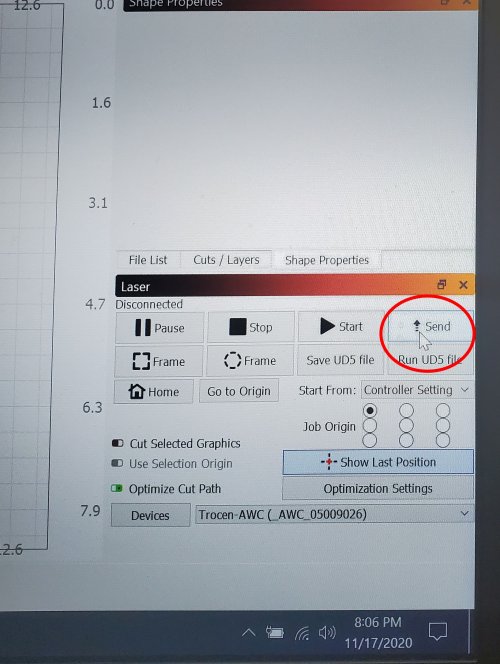 Save your project and in the laser window click "Send" to transfer the project to the laser cutter. You will be asked to name the project, but you can leave it as default if you wish.
Save your project and in the laser window click "Send" to transfer the project to the laser cutter. You will be asked to name the project, but you can leave it as default if you wish.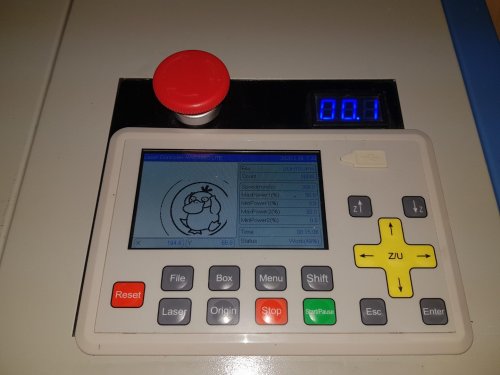 On the laser cutter, close the lid and ensure everything is in place, then on the cutter controls, press "Start/Pause" to begin the job. If you need to stop the machine, press the "Start/Pause" button to pause in place, or press the "Stop" button to cancel the job.
On the laser cutter, close the lid and ensure everything is in place, then on the cutter controls, press "Start/Pause" to begin the job. If you need to stop the machine, press the "Start/Pause" button to pause in place, or press the "Stop" button to cancel the job.
Tips from The Make Space
- The K40 should never be used without close supervision. Never leave the machine running without oversight
- This machine creates fire, smoke, and a laser that can blind if proper Personal Protective Equipment (PPE) and proceedures are not followed
- Machine must be water-cooled or will damage the system
- Great information on this model of cutter and some of the issues, uses, and how-to guides
From a good article in Hackaday about starting with a K40:
In general, wood is safe to cut, as is paper, cloth, melamine, pressboard, matte board, cork, some rubbers, natural leather, and Corian. Engraving can be performed on materials such as glass, stone, anodized aluminum, steel (with a laser engraving coating) and other materials. Some plastics should never be cut in a laser cutter. Anything with chlorine – notably PVC and vinyl. Burning PVC results in chlorine gas, which will kill the user, and hydrochloric acid, which will rust your K40 out so bad that your next of kin won’t be able to enjoy it. A simple test for chlorine is the copper wire burnination test, which can be seen in this 10-year-old video from [Adam] and [Zach] at NYC Resistor. ABS plastic is another one to avoid. It tends to melt and is messy to cut. It also releases trace amounts of cyanide gas.